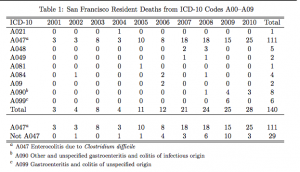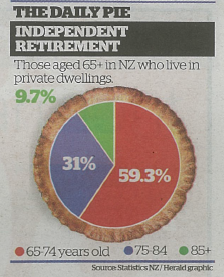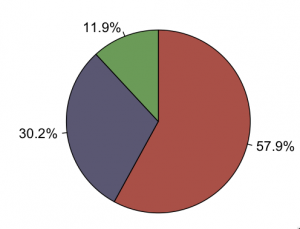There’s a research report by two economists arguing that San Francisco’s bag on plastic shopping bags has led to a nearly 50% increase in deaths from foodborne disease, an increase of about 5.5 deaths per year. I was asked my opinion on Twitter. I don’t believe it.
What the analysis does show is some evidence that emergency room visits for foodborne disease have increased: the researchers analysed admissions for E. coli, Salmonella, and Campylobacter infection, and found an increase in San Francisco but not in neighbouring counties. There’s a statistical issue in that the number of counties is small and the standard error estimates tend to be a bit unreliable in that setting, but that’s not prohibitive. There’s also a statistical issue in that we don’t know which (if any) infections were related to contamination of raw food, but again that’s not prohibitive.
The problem with the analysis of deaths is the definition: the deaths in the analysis were actually all of the ICD10 codes A00-A09. Most of this isn’t foodborne bacterial disease, and a lot of the deaths from foodborne bacterial disease will be in settings where shopping bags are irrelevant. In particular, two important contributors are
- Clostridium difficile infections after antibiotic use, which has a fairly high mortality rate
- Diarrhoea in very frail elderly people, in residential aged care or nursing homes.
In the first case, this has nothing to do with food. In the second case, it’s often person-to-person transmission (with norovirus a leading cause), but even if it is from food, the food isn’t carried in reusable shopping bags.
Tomás Aragón with the San Francisco department of Public Health, has a more detailed breakdown of the death data than were available to the researchers. His memo I think is too negative on the statistical issues, but the data underlying the A00-A09 categories are pretty convincing:

Category A021 is Salmonella (other than typhoid); A048 and A049 are other miscellaneous bacterial infections; A081 and A084 are viral. A090 and A099 are left-over categories that are supposed to exclude foodborne disease but will capture some cases where the mechanism of infection wasn’t known. A047 is Clostridium difficile. The apparent signal is in the wrong place. It’s not obvious why the statistical analysis thinks it has found evidence of an effect of the plastic-bag ban, but it is obvious that it hasn’t.
Here, for comparison, are New Zealand mortality data for specific foodborne infections, from foodsafety.govt.nz, the most recent year available

Over the three years, there were only ten deaths where the underlying cause was one of these food-borne illnesses — a lot of people get sick, but very few die.
The mortality data don’t invalidate the analysis of hospital admissions, where there’s a lot more information and it is actually about (potentially) foodborne diseases. More data from other cities — especially ones that are less atypical than San Francisco — would be helpful here, and it’s possible that this is a real effect of reusing bags. The economic analysis,however, relies heavily on the social costs of deaths.



